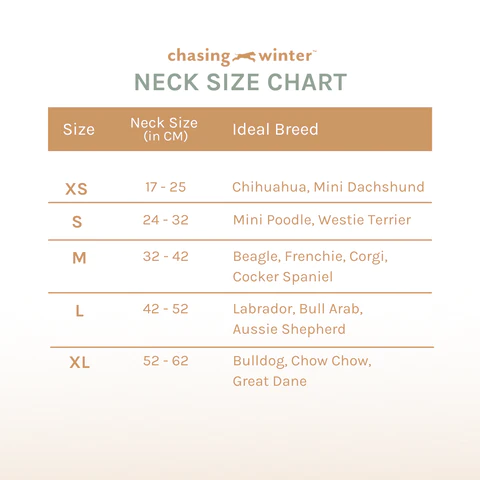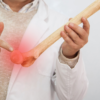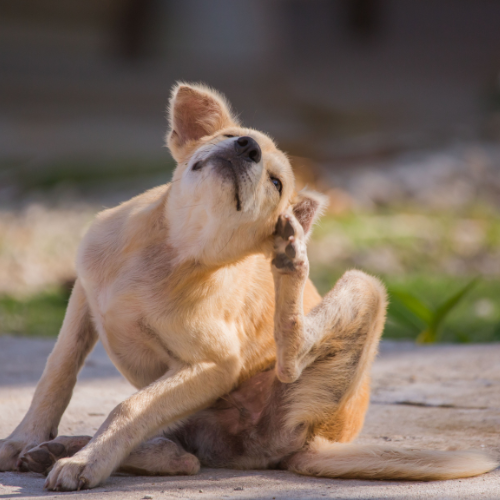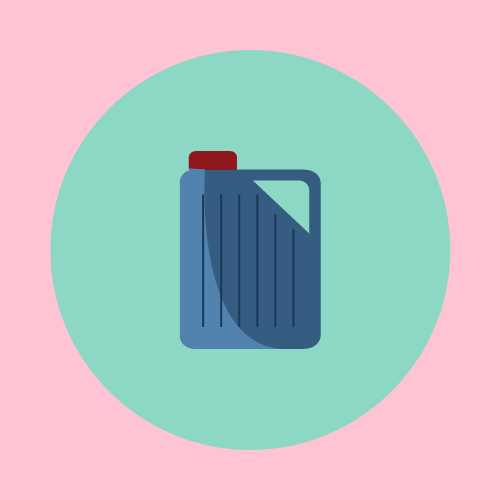Introduction
Dog collars are essential for our furry friends, providing safety and identification in various situations. However, an unfortunate side effect some pet owners encounter is hair loss caused by dog collars. This article aims to explore the reasons behind this issue and offer practical solutions to prevent it. We will discuss how to choose the right collar, identify hair loss due to collars, and consider alternative options. By the end of this informative guide, you’ll be equipped with the knowledge needed to tackle collar-induced hair loss and ensure your dog’s comfort and well-being.
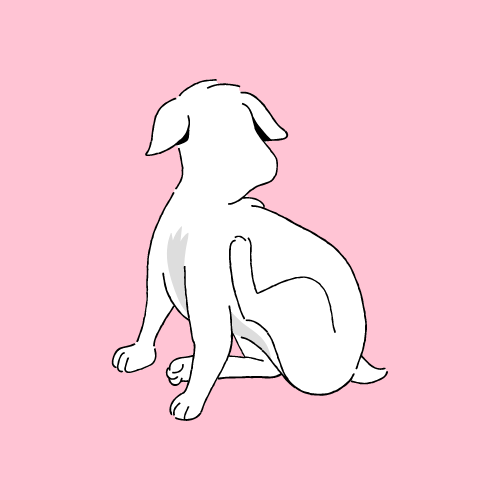
Identifying Hair Loss Due to Dog Collars
Symptoms and Signs of Hair Loss
Hair loss due to collars typically presents as thinning or bald patches around the neck area where the collar rests. You may notice broken hair, skin irritation, or redness in the affected region. In severe cases, the constant rubbing may cause sores or scabs, potentially leading to infection if left unaddressed.
Differentiating Between Normal Shedding and Hair Loss
It’s essential to distinguish normal shedding from collar-induced hair loss. All dogs shed to varying degrees depending on their breed, age, and health. Normal shedding is characterized by a uniform and natural loss of hair across the entire body. In contrast, hair loss caused by collars is localized, usually concentrated around the neck area, and can be accompanied by skin irritation or damage.
Alternative Causes of Hair Loss
While collars may be a common cause of hair loss, it’s important to consider other potential factors, such as allergies, parasites, hormonal imbalances, poor nutrition, or underlying medical conditions. If you’ve addressed the collar issue and your dog’s hair loss persists or worsens, consult a veterinarian for a thorough examination and appropriate treatment.
Why Dog Collars Cause Hair Loss
Friction and Rubbing
One of the primary reasons dog collars can cause hair loss is friction and rubbing. When a collar constantly rubs against your dog’s neck, it can break hair shafts and damage the skin, leading to hair thinning or bald patches over time. This problem can be exacerbated if your dog has a habit of pulling on the leash or scratching at their collar.
Poor Collar Fit
An improperly fitting collar can contribute to hair loss. If the collar is too tight, it can cause excessive pressure on the skin and hair, leading to damage and discomfort. On the other hand, if the collar is too loose, it may move around too much, increasing friction and the likelihood of hair loss. Ensuring a proper fit is essential to minimizing the risk of collar-induced hair loss.
Unsuitable Collar Materials
Certain collar materials may be more likely to cause hair loss, especially if your dog has sensitive skin or allergies. Rough or abrasive materials can increase friction, while some dogs may develop an allergic reaction to specific materials like nylon or certain metals. Choosing a collar made of a soft, hypoallergenic, and durable material can help reduce the risk of hair loss and skin irritation.
Choosing the Right Collar
Properly Measuring Your Dog’s Neck
To ensure a comfortable and secure fit, it’s crucial to accurately measure your dog’s neck before purchasing a collar. Use a flexible measuring tape to measure the circumference of your dog’s neck at the point where the collar will rest. Add about two fingers’ width of space to the measurement to allow for a comfortable fit.
Assessing Collar Fit
A properly fitting collar should be snug but not too tight, allowing you to comfortably slip two fingers between the collar and your dog’s neck. If the collar is too loose, it may move around excessively, increasing the risk of hair loss due to friction. On the other hand, if it’s too tight, it can cause discomfort and restrict your dog’s breathing.
Comparing Collar Materials and Styles
- Leather: Leather collars are durable, stylish, and comfortable. They soften with use and are less likely to cause irritation or hair loss. However, they may require more maintenance, as they need to be conditioned and cleaned regularly to prevent cracking.
- Nylon: Nylon collars are affordable, lightweight, and come in various colors and patterns. However, some dogs may have an allergic reaction to nylon, and the material can be abrasive, potentially causing hair loss and skin irritation.
- Neoprene: Neoprene collars are soft, water-resistant, and quick-drying, making them ideal for dogs who love to swim. The cushioning effect of neoprene can help reduce friction, lowering the risk of hair loss.
- Biothane: Biothane collars are waterproof, durable, and easy to clean. They resemble leather in appearance but are lighter and less prone to stretching. The smooth surface of biothane can help minimize friction and hair loss, making them a suitable option for sensitive dogs.
Preventing Hair Loss: Collar Alternatives
Harnesses
Harnesses are an excellent alternative to traditional collars, as they distribute pressure evenly across the chest and shoulders instead of concentrating it on the neck. This reduces the risk of hair loss and can also improve your dog’s comfort, particularly during walks or when they’re prone to pulling. There are various harness styles available, including front-clip, back-clip, and dual-clip options, so choose one that suits your dog’s size and temperament.
Head Collars
Head collars, also known as head halters, are designed to give you more control over your dog’s head and muzzle, which can be helpful for dogs that pull or have behavioral issues. The head collar’s design reduces pressure on the neck and helps prevent hair loss while still providing you with control during walks. However, it’s essential to introduce your dog to a head collar gradually and positively, as some dogs may initially find them uncomfortable or intimidating.
Custom or Personalized Collars
Custom or personalized collars can be designed with your dog’s specific needs and comfort in mind. You can choose the material, style, and fit that best suits your dog, minimizing the risk of hair loss and irritation. For example, you may opt for a collar with a soft, padded lining or one made of hypoallergenic materials. Custom collars can also be a stylish and unique way to showcase your dog’s personality.
Training Your Dog to Accept New Collars or Harnesses
Introducing Alternative Collar Types
When introducing a new collar or harness to your dog, it’s essential to do so gradually and patiently. Allow your dog to sniff and explore the new item before placing it on them. Begin with short sessions, gradually increasing the duration as your dog becomes more comfortable. This process will help your dog form positive associations with the new collar or harness and reduce any potential anxiety or resistance.
Utilizing Positive Reinforcement
Positive reinforcement is a powerful training tool that can help your dog accept new collars or harnesses more readily. Praise, treats, and affection should be used to reward your dog when they show interest in a new item or allow you to put it on them. This will help your dog associate the new collar or harness with positive experiences, making them more likely to accept it without fuss.
Ensuring a Smooth Transition
To ensure a smooth transition to a new collar or harness, try to maintain your dog’s regular routine as much as possible. Keep walks, playtime, and feeding times consistent to minimize stress and confusion. Additionally, be patient and understanding if your dog initially struggles with the new collar or harness. Provide reassurance and support, and avoid scolding or punishing them if they seem uncomfortable. With time, consistency, and positive reinforcement, your dog will likely adjust to the new item and enjoy the benefits of reduced hair loss and increased comfort.
- Does Motor Oil Kill Fleas on Dogs: A Flea Solution or a Dangerous?
- Do Dogs Have a Funny Bone? [Explained]
- Are Orbeez Toxic to Dogs? [The Facts]
Collar Maintenance and Care
Cleaning and Conditioning Your Dog’s Collar
Proper cleaning and maintenance can prolong the life of your dog’s collar and help prevent hair loss. For leather collars, use a gentle leather cleaner and conditioner to keep the material supple and prevent cracking. Nylon, neoprene, and biothane collars can be cleaned with mild soap and water, then air-dried. Regular cleaning will help remove dirt and debris that could contribute to friction and hair loss.
Identifying Wear and Tear
Inspect your dog’s collar periodically for signs of wear and tear, such as fraying, cracks, or broken buckles. Damaged collars can increase the risk of hair loss and may also compromise your dog’s safety. Be especially vigilant if your dog spends a lot of time outdoors, swims frequently, or has a habit of chewing on their collar, as these factors can accelerate wear and tear.
Knowing When to Replace the Collar
It’s crucial to replace your dog’s collar when it becomes worn or damaged. A worn-out collar may not provide adequate control during walks and can increase the risk of hair loss due to friction or irritation. As a general rule, replace your dog’s collar at least once a year or sooner if you notice signs of wear or damage. Regularly updating your dog’s collar ensures their comfort and safety, while also reducing the chances of hair loss.
Supporting Hair Regrowth and Coat Health
Monitoring Your Dog’s Skin and Coat:
Regularly check your dog’s skin and coat for any abnormalities, such as dryness, itchiness, redness, or flakiness. These could be signs of an underlying health issue, such as allergies or infections, which can affect hair growth and coat health.
Promoting a Healthy Coat Through Diet and Grooming:
Feed your dog a balanced and nutritious diet that includes essential vitamins and minerals like Omega-3 fatty acids, biotin, and zinc, which can promote healthy skin and coat. Additionally, regular grooming can help remove loose hair and distribute natural oils, improving the overall appearance and health of your dog’s coat.
Being Patient During the Recovery Process:
Hair regrowth and coat health can take time to improve, especially if your dog has experienced significant damage or underlying health issues. Be patient and consistent with your dog’s diet and grooming routine, and work closely with your veterinarian to monitor any progress and adjust treatment plans as necessary.
When to Consult a Professional
Seeking Help for Persistent Hair Loss:
If your dog experiences persistent hair loss, it may be a sign of an underlying health issue. If you notice excessive shedding or bald patches on your dog’s skin, it is important to seek professional help from a veterinarian or animal dermatologist.
Visiting a Veterinarian or Animal Dermatologist:
If you suspect that your dog’s hair loss or coat health issues are due to an underlying health issue, it is important to visit a veterinarian or animal dermatologist. These professionals can conduct a thorough examination of your dog’s skin and coat, and recommend appropriate treatments, such as medication or specialized grooming products, to help promote hair regrowth and improve coat health.
Conclusion
In conclusion, if your dog’s collar is rubbing its fur out, it is important to take action to prevent further damage to your dog’s skin and coat. Consider using a collar made of a soft material or switching to a harness, and monitor your dog’s skin for any signs of irritation or infection. Be sure to follow the steps outlined in this guide to promote hair regrowth and improve your dog’s coat health. If the problem persists, seek professional help from a veterinarian or animal dermatologist who can recommend appropriate treatments and help ensure your dog’s comfort and wellbeing. With proper care and attention, you can help your dog maintain a healthy and beautiful coat.
FAQs (Frequently Asked Questions)
A. Can I stop using a collar altogether?
Yes, you can consider using a harness instead of a collar to prevent further hair loss. However, make sure to consult with your veterinarian to ensure that a harness is suitable for your dog’s needs.
B. How can I prevent my dog from pulling on their collar or harness?
Training your dog to walk on a loose leash can help prevent pulling on their collar or harness. Additionally, ensuring a proper fit for the collar or harness can also prevent discomfort and irritation.
C. Are certain dog breeds more prone to collar-related hair loss?
Dogs with thin or sensitive coats may be more prone to collar-related hair loss. Breeds such as Whippets, Greyhounds, and Dachshunds may be more susceptible to this issue.
D. What should I do if my dog’s hair loss worsens or doesn’t improve?
If your dog’s hair loss worsens or doesn’t improve despite taking appropriate measures, it is important to seek professional help from a veterinarian or animal dermatologist. They can conduct a thorough examination and recommend appropriate treatment to help improve your dog’s coat health.

Doctor of Veterinary Medicine (D.V.M.) at Nation Taiwan University,Master of Science (M.S.) in Biomedical Engineering at National Taiwan University of Science and Technology
